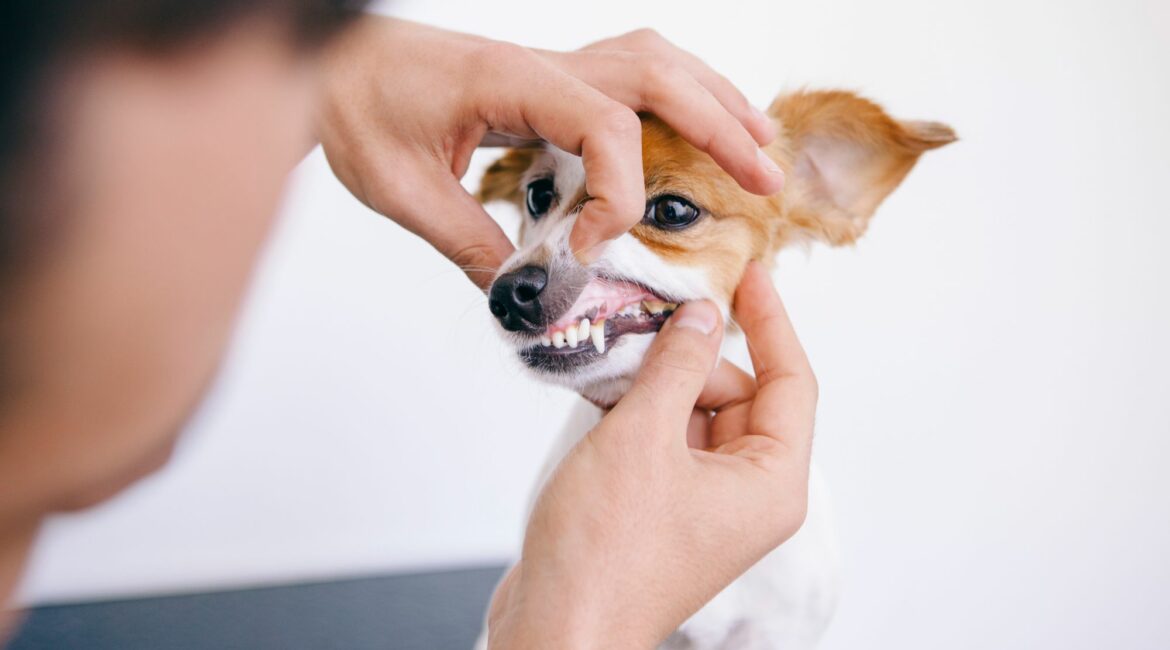The question many pet parents have is how to take care of pets at home in between vet visits to make sure they are still in good health. Most of the time, minor issues (such as an eye or ear infection) can be easily treated with anti-bacterial drops, a tablet, or a quick trip to the vet. It’s a different story if these issues go undetected. You know the saying, prevention is better than cure? Well, that applies here too.
Any issues that go unnoticed could progress into something more serious and put your dog through a lot more pain if these signs aren’t caught early. That’s why it’s important to go through the 6 step checklist regularly.
Here’s our 6-step checklist for how to take care of pets at home:
1. Seeing eye to eye
Crouch down to eye level and check that the whites of your dog’s eyes are not bloodshot or a pinky colour. This could indicate irritation or infection. There shouldn’t be any swelling or discharge and if your dog is squinting or closing one of its eyes, it may indicate that your pet is in pain. If you do spot any of these signs, it’s best to give your vet a call and see if it’s necessary to bring your dog in for an appointment.
2. Follow your nose
Now is the time to get up close and personal with your pup and check its nose for signs of dryness and cracks. Be sure to check if your pup’s nose is cold and wet. If there is any scaliness, ask your vet to do a quick Skype or FaceTime call and check that everything is okay.
3. Check out those canines!
Have a thorough look at those teeth and gums. It may be uncomfortable for your pet so try to keep the inspection short and simple. Examine the gums and teeth on a regular basis by raising/lowering the lips to check. Keep an eye out for things like brown tartar buildup, redness along the gums or excessively bad breath.
If you’re not familiar with the basics of pet dental care, get a mouthful of these terrific tips on how to look after your dog’s teeth at home.
Another great option is our simple and straightforward Oneplan dental cover with your afforable pet insurance to help take care of your pup’s perfect smile.
4. A change of heart
Noticeable changes in your dog’s normal heartbeat is a sign you need to look out for. That’s why it’s a good idea to check your pup’s heartbeat every now and again by gently placing your hands on both sides of your dog’s chest and feeling his heartbeat.
Use your watch to measure the beats/minute. His heart rate should be 70-120 bpm and there should be a regular rhythm. His breathing should be smooth and there shouldn’t be any signs of strain. If there’s anything out of the ordinary, make an appointment to see the vet.
5. Be all ears
Look for excessive ear wax or sticky discharge in your pet’s ears. If there is a strange smell or swelling, monitor it to see if it goes away naturally over time. If not, it’s best to consult your vet. If your pup is scratching its ears more than normal, that’s also something to pay attention to.
It’s also important to clean your dog’s ears from time to time. Make use of ear drops and a cotton ball or pad around your index finger, and gently wipe away any dirt or discharge from the visible part of your dog’s ear canal and outer ear. Be sure to get at any of that excessive ear wax. We know it’s not the most enjoyable job in the world (for you or your pup), but it can really help your dog stay healthy and infection-free.
6. Claws and effect
If your pet is in pain it could stop them from being their wonderful, energetic self — so be sure to take a good look at your dog’s paws and claws every now and again. Overgrown nails could grow right around and become embedded in their little paw pad. This is super painful for a dog and could cause a lot of discomfort.
Be sure to give their pads a thorough inspection too. Are they cracked or torn? Is there swelling or redness between the toes? If there is a musty odour? This is also a sign that you might need to head to the vet or try at-home remedies.
A lot of the time our animals try to tell us what’s wrong with them and do little things to show us how they feel. So be sure to pay close attention to any small changes in your pet’s behaviour. They might be less playful and a lot more subdued. If they stop eating or going outside as much, that could be an indicator that something’s up.
You have the best relationship with your pet out of everyone, so you’ll be the most likely to feel if their energy or temperament is off. Any change in mood or behaviour could be a good sign that you should run through the six-step checklist again and if you spot anything concerning, make an appointment with your vet.
Your Pet Insurance Family,
Oneplan




